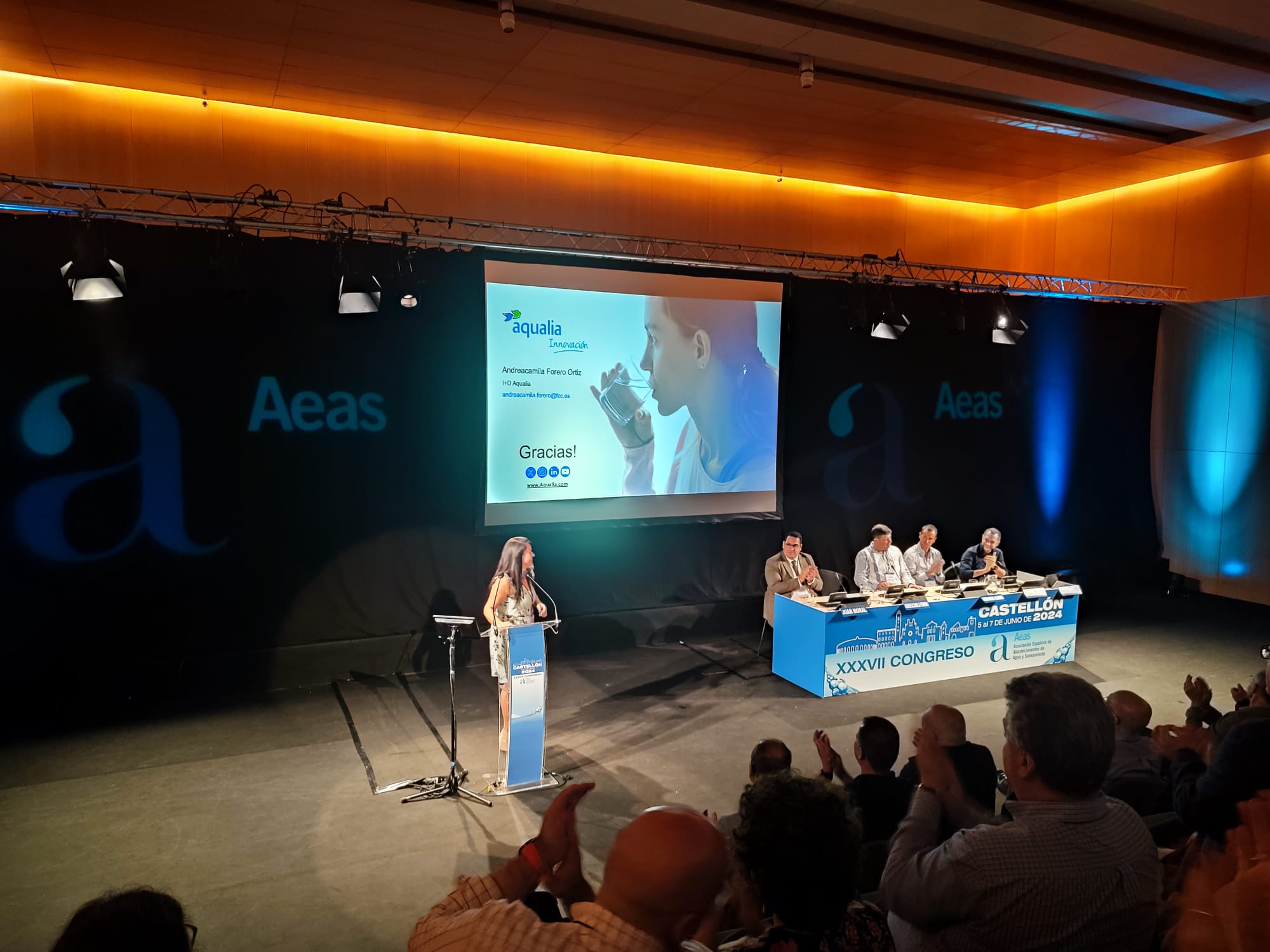
On June 7th, our colleague from Aqualia, Camila Forero, participated as a speaker at the AEAS Congress in Castellón, where she shared the activities we are carrying out under the LIFE RESEAU project.
Her presentation, titled “Digitalization of Sewer Networks, Infiltration Detection, and Minimization of Overflows Impact. LIFE RESEAU” showcased our innovative approach to addressing the challenges faced by cities and sewer infrastructures in response to the increasing frequency of heavy precipitations, a growing consequence of climate change.
The presentation emphasized the crucial role of digitalization in sewer networks, highlighting the impact of climate change on areas affected by heavy rainfall and its effects on existing infrastructure, particularly on sewer networks and wastewater treatment plants.
One of the solutions presented was the use of Aerobic Granular Sludge echnology (AGS) at the Moaña Wastewater Treatment Plant (WWTP), which increases treatment capacity using existing infrastructure while simultaneously operating with conventional treatment. This innovation is essential for managing the flow increases that occur during intense rainfall events.
The presentation also focused on the digitalization process and the roadmap followed by the project, emphasizing how the information gathered at each stage has been vital for developing advanced models in parallel. The role of technologies such as Geographic Information Systems (GIS) was highlighted, which provide a clear picture of the structure, composition, and condition of sewer networks and are part of LIFE RESEAU’s digital solution, the SiiMS (Smart Infiltration/Inflow Management System). This information is key to measuring, understanding, and controlling what happens in the network, enabling the implementation of more efficient control actions.
Furthermore, the development of hybrid models using machine learning and artificial intelligence (ML/AI) was emphasized, allowing for the anticipation and prediction of the behavior of the sewer network under different rainfall scenarios. These advanced models facilitate the assessment and prediction of critical parameters, such as flow and overflows, and the breakdown of the flow passing through the network, significantly improving decision-making and control planning.
This comprehensive and digitized approach aims not only to optimize the response to extreme weather events but also to ensure the sustainability and efficiency of sanitation infrastructures in the context of increasing climate variability.

